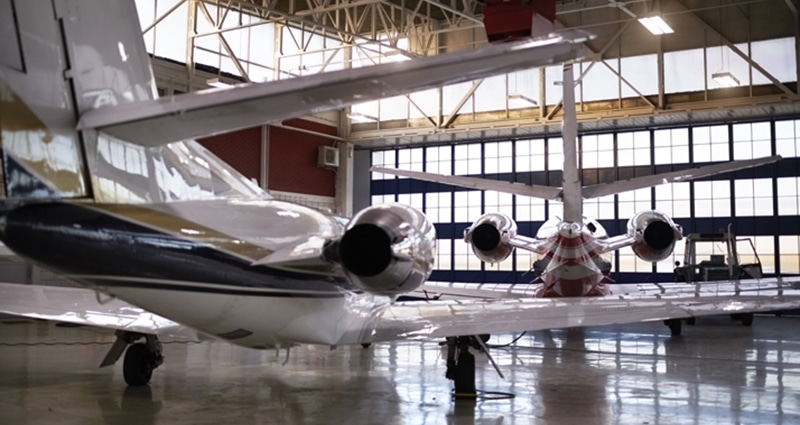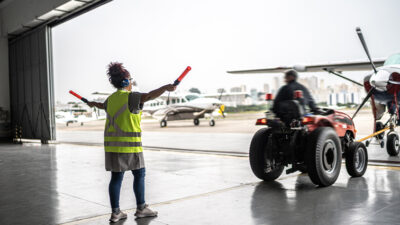Enhancing Aviation’s Value & Relevance in Today’s Pandemic Environment

The COVID-19 pandemic has violently disrupted nearly everything we previously considered “normal.” Who could have imagined that during the middle of March 2020, the business world would be so dramatically and radically changed?
At the onset of the pandemic, most business aviation organizations went into a state of “suspended animation.” Many aviation leaders thought: “If we just hold our breath long enough, this too will pass.”
Well, it’s now December 2020 and the most devastating peak of this deadly crisis appears to be yet ahead of us. To underscore this point, the 2021 Paris Airshow has been cancelled and that’s seven (7) months away!
Insight from Aviation Leaders
We at Gray Stone Aviation Advisors recently spoke with several of the most innovative and successful leaders in the business and private aviation sectors. We wanted to know what they were grappling with now. The consistent answer was: “How does aviation create value and relevance in today’s pandemic world?”
They told us that the way their host organizations ( corporations, high-net-worth individuals, family offices, etc.) viewed the ”value” and ”relevance” of their aviation operations had seriously changed. And it was continuing to evolve. These aviation leaders had come to the realization that it was up to them to reinvent the future.
The realities of yesterday were now history and they had to embrace disruption as a catalyst to invention of the future. Most found the process to be uncomfortable and foreign, and initially they were uncertain about how to proceed. But no one was going to do it for them. Their refrain was: “If it’s going to be, it’s up to me.”
Stepping Into the New Reality
So, how did they start the process? To a person, they indicated that the first step was to define the new context in which they were operating. “How has my company changed?” was the most fundamental trigger question.
Answering that pivotal point required, of course, that each leader truly understood the legacy operating norms of the enterprise. This meant that they had had some involvement at the corporate level and had a good grasp of both the strategic direction/priorities and tactical operating practices of the host organization.
But now, the game had changed. In many cases, it was turned upside down. The next question that these leaders had to deal with (and many are still) was how the pandemic-driven changes they had identified at the parent entity specifically impacted aviation’s ability to produce value.
With that question in mind, the most innovative aviation leaders began to posit how “relevance” would be defined going forward. Given the changes to the business’s operating model(s), how could aviation redefine itself in a complementary and supportive manner? This, then, would be the start of developing the new value proposition(s) for aviation.
Next, they needed to understand how the “accomplishment of work” had changed within the host organization. What would be the impact on travel given the rapid adoption of “remote work” and leveraging of telecommunications technology? Many senior executive leaders were no longer working in centralized locations. What would be the methods available to facilitate in-person meetings?
One Size Does Not Fit All
One solution rarely satisfies all requirements. That has become profoundly true during the pandemic. In mid- to late- summer 2020, many business organizations found that periodic executive presence at important field or client locations was vital to continuing high levels of corporate performance.
The axiom was confirmed that there is nothing like ”pressing the flesh.” Business aviation became a vital tool to enhance or sustain communication and performance. New ideas came up like expanding the authorized user list and beginning shuttle operations for key mid-level managers.
One of the most important success factors for aviation organizations has been the ability to anticipate the host organization’s needs and offer new, innovative approaches. The aviation organizations that chose to sit back and wait for the phone to ring are, in many cases, still waiting and their relevance is increasingly being questioned.
Today’s leading aviation organizations are anticipatory, not reactionary. They are answering the question: “What does the company, high-net-worth individual or family office really need when it comes to in-person contact?” And they are acting on that answer.
Business Aircraft Create No Value Sitting in Hangars
As today’s top aviation leaders work their way through these pivotal questions, they are proactively developing new value propositions for their host organizations. It’s more than a bit outside of our legacy roles in business aviation, but agility is the only way to maintain aviation’s relevance in this rapidly-evolving business environment.
Here’s a link to a short video that summarizes these value creation and relevance themes.

Gray Stone Advisors combines their experience both in leading businesses as well as business aviation operations to provide flight department leaders with proven strategies for excellence.
https://www.graystoneadvisors.com/
© 2024 Gray Stone Advisors. All Rights Reserved.
Next ArticleRelated Posts

More Than a Box Tick: Achieving Operational Flexibility With an FRMS
Moms know best. This adage holds true in many domains of family life—allergies, grades, crushes. When thinking about aviation safety, though, perhaps the best illustration drawn from mom’s expertise is…

The Effects of a Learning Mindset on Safety Culture
As aviation departments strive to enhance their safety performance, a critical yet often overlooked element is the need to foster a learning-culture mindset. This mindset shift can unlock invaluable opportunities for continuous improvement, employee engagement and creating a resilient safety environment. From a behavioral management perspective, as your company’s learning culture goes, so goes the ongoing success of your SMS.

